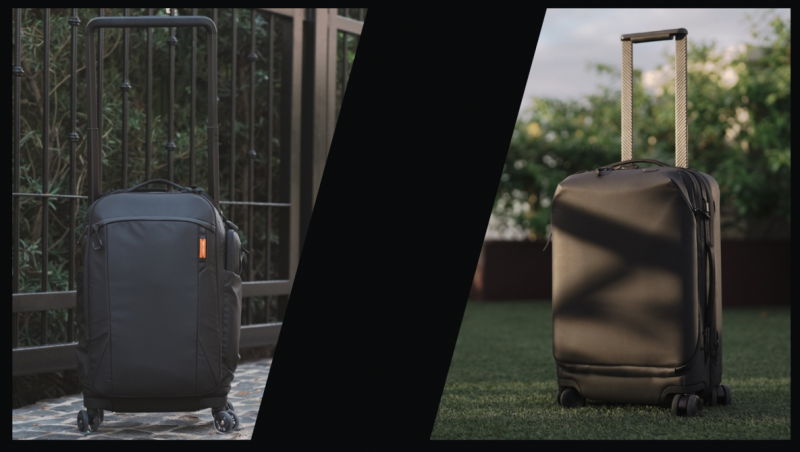Contents
Camera bag brands have been busy over the past year. With these two being among the popular roller camera bags, let’s talk about which one’s better for you.
If you carry a lot of gear or travel with your cameras often, whether for professional projects or personal trips, you get to a point where you’d prefer your gear on wheels. Until this year, we have not seen many camera bag brands release roller camera bags with strikingly unique and innovative design features. Since the Peak Design Roller Pro and the Pgytech Roller Camera Backpack came out within the same 6-month period, it is worth taking a look at their similarities and differences to find out which one might suit your needs better.
The Peak Design Roller Pro and the Pgytech Roller Camera Backpack may have the same goals but are two very differently built bags. From the exterior—the handles, the wheels, the padding, and the overall design theme—the combination of features potentially sets them apart in terms of actual use cases. Let’s compare and contrast the two bags according to different aspects.
Size and Form
Both the Peak Design and Pgytech roller bags make use of a mixed structure that has a soft outer shell covered in moisture-resistant polyester and is internally reinforced by a more rigid/padded structure for protection. The Peak Design Roller Pro has a more minimalist design with a bare surface on both the front and rear panels. It comes with a quick-accessible front pocket for personal items and a 16” laptop sleeve in front. While these compartments are accessible externally, the placement of the zippers and access points blends very well with the rest of the bag.
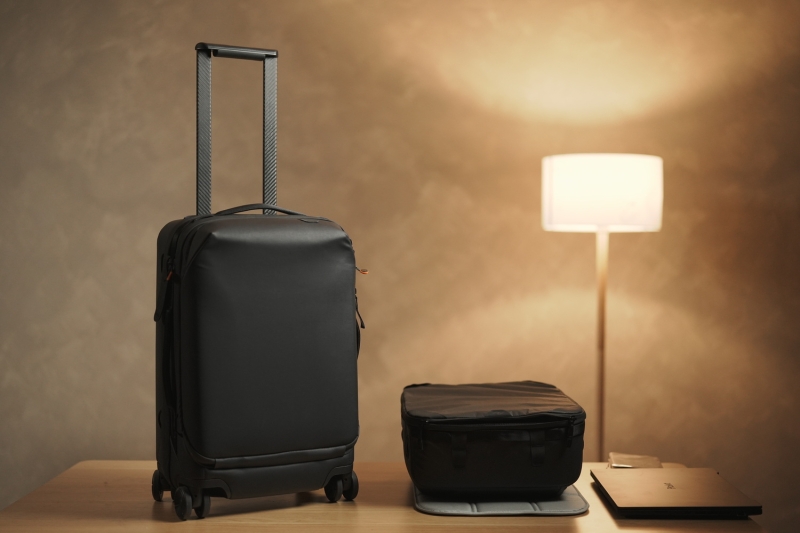
The Peak Design Roller Pro measures 22 x 14 x 9 inches, fitting right into most airline carry-on restrictions (22 x 14 x 9 inches for airlines like United, Delta, Japan Airlines, Philippine Airlines, and others) and weighs 3.9 kilograms.
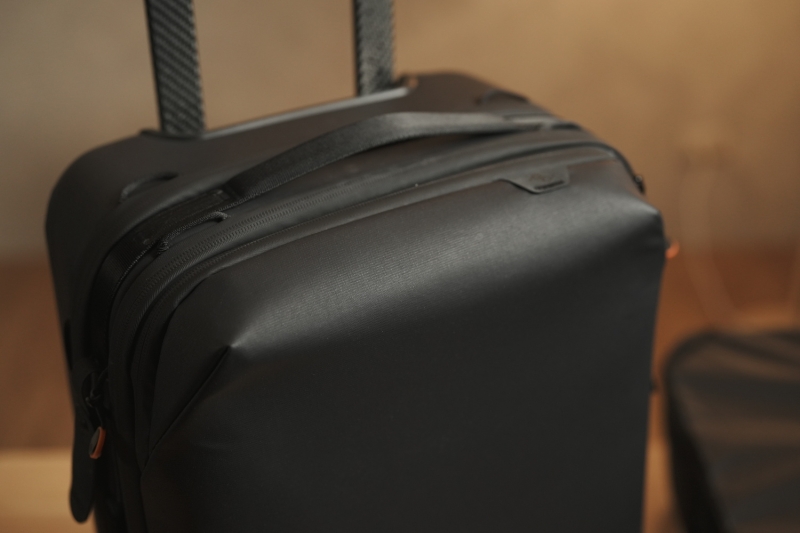
The Pgytech Roller Camera Backpack, on the other hand, has more distinct external features. It has a front pocket for small accessories accessed from a zipper in front, a secondary expander pocket that can provide an additional 10 liters of space but bulks up the front of the bag, and two side pockets for tripods and other cylindrical accessories.
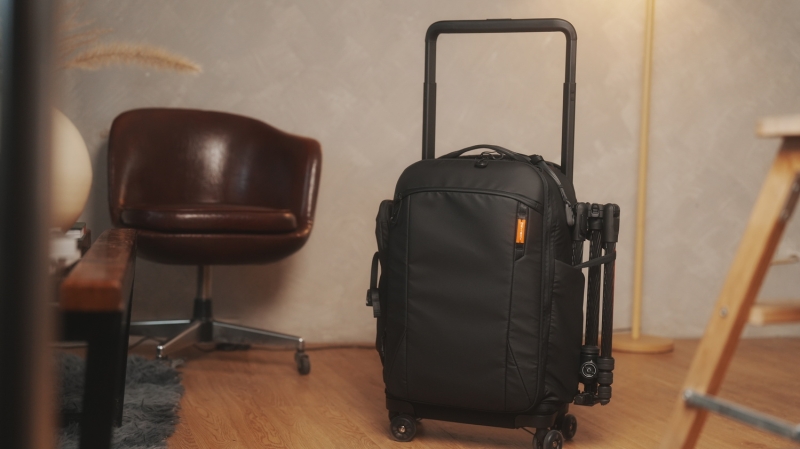
The Pgytech Roller Camera Backpack measures 24 x 14.5 x 10.3 inches and weighs 3.6 kilograms with the wheels installed and the external pockets not fully packed. For the bag to fit within the above-mentioned airline carry-on restrictions, the user can remove the wheels and keep the pockets relatively empty, which might not be the most beneficial for someone traveling with a lot of gear.
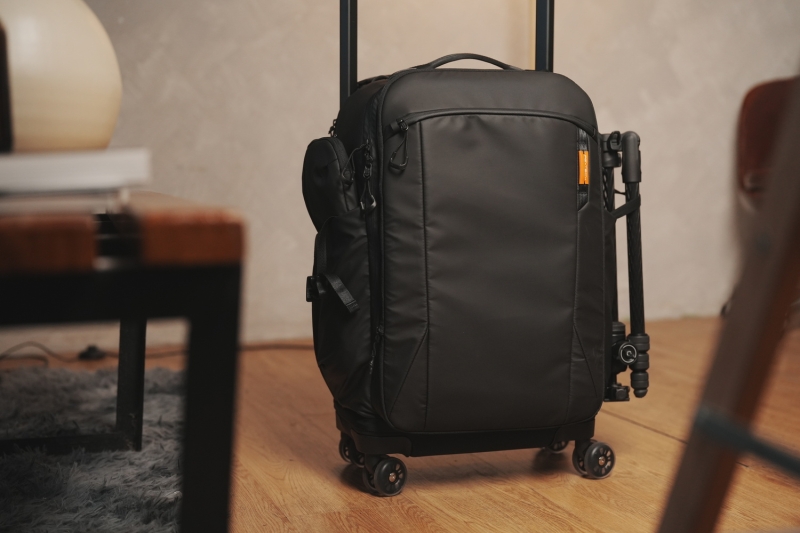
Capacity and Padding
The Peak Design Roller Pro on its own has relatively thinner padding, which opens up more of the main compartment for usable space. However, this also means that carrying camera gear requires the use of separately sold camera cubes. While Peak Design does have its own line of such camera cubes, any kind and size can be used with it. This can be beneficial to the user if they prefer to bring less gear and use a smaller camera cube while using the compartment for a mix of gear and personal items.
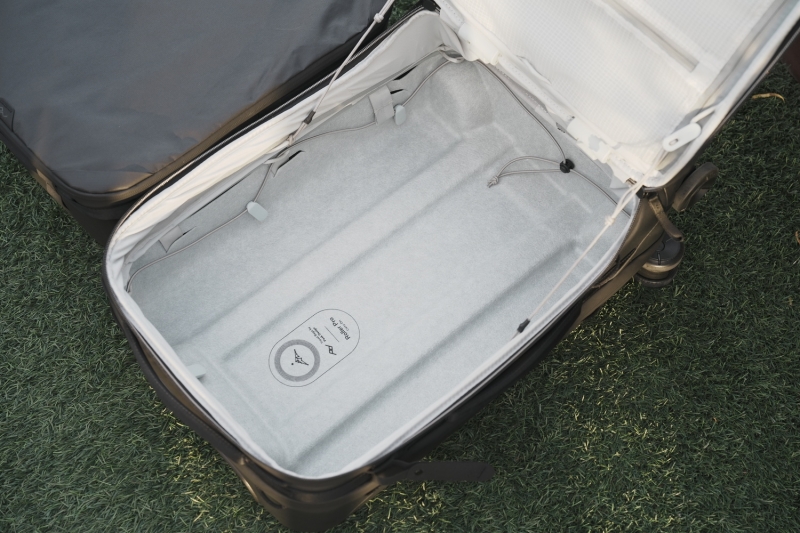
When using the largest available camera cube from Peak Design (XL), it can hold a combination of two full frame mirrorless camera bodies and 8 to 10 lenses, depending on the actual size and arrangement.
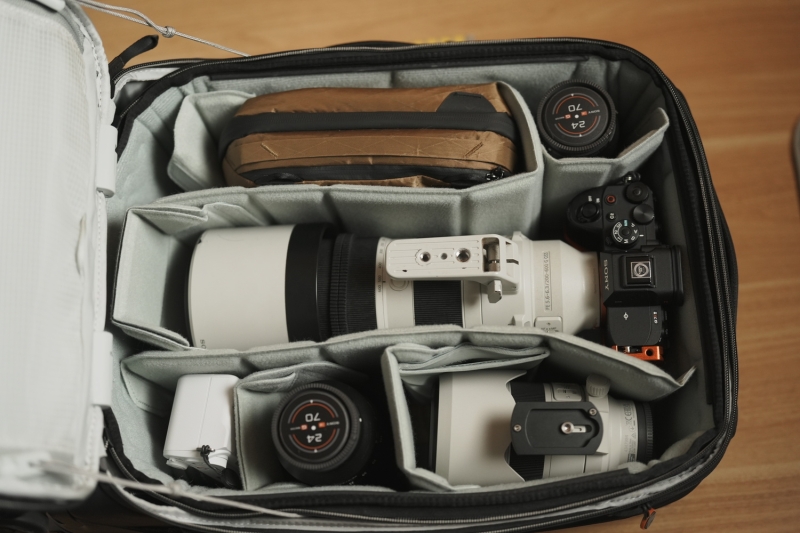
The Pgytech Roller, on the other hand, has the padding built into the walls of the bag. All the dividers can be removed and reorganized to the user’s liking, but the sides will remain as thick as they are even if the user does not need the full compartment for delicate gear. Since it is technically taller, it allows for a little more gear inside, with 2 or 3 camera bodies and up to 10 lenses, again depending on the arrangement.
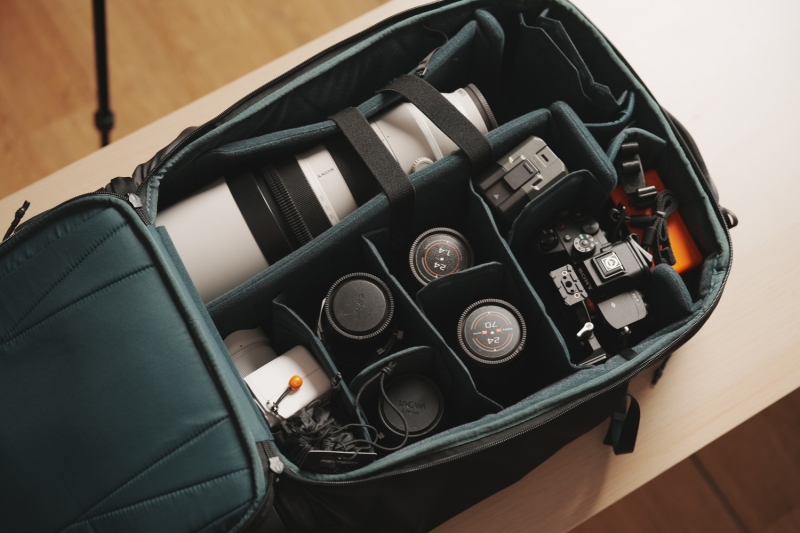
Accessory Pockets
The Pgytech roller offers more accessory pockets in this comparison. The front pocket can be used for small- to medium-sized personal items such as passports, notebooks, wallets, and phones—even all of them together. The expander pocket can carry a set of clothes or even a camera gimbal when fully expanded, and this does not affect the capacity of the main compartment in any way. The laptop compartment can hold up to a 17” laptop but is accessed from the flap of the main compartment, which means having to set the bag down for access. The side pockets can carry even full-sized tripods and/or light stands, which can be quite handy when needed.
The Peak Design roller, on the other hand, has room for a couple of phones and/or wallets in the front compartment and, as mentioned, a 16” laptop in front. Other accessories can be placed behind the front flap by opening the main zipper; however, these take up vertical space from the main compartment if packed tightly.
Handles
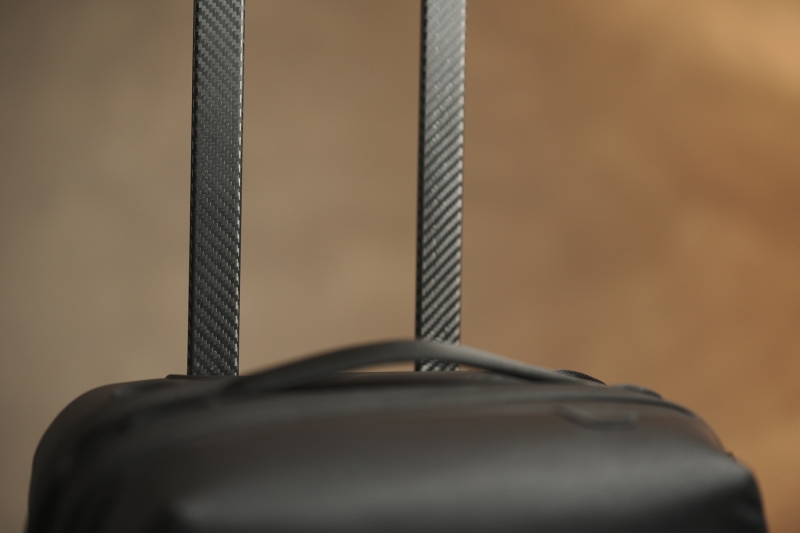
The Peak Design Roller Pro uses a handle that is unique compared to other carry-on luggage and roller camera bags. The handle is made of a solid thin carbon fiber rod with no telescopic sections, reducing the footprint on the compartment and the risk of the handle getting stuck.
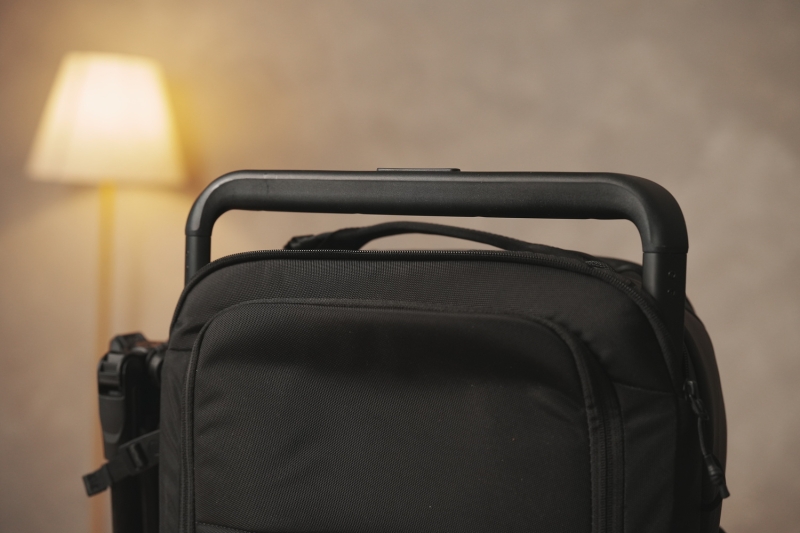
The Pgytech roller comes with a much wider handle that pushes the rods all the way to the sides of the bag. This way, the handles take up less space and don’t get in the way of the gear since there is no indentation in the middle. The downside, however, is that it would not be compatible with fastening sleeves on most backpacks and sling bags when used together.
Wheels
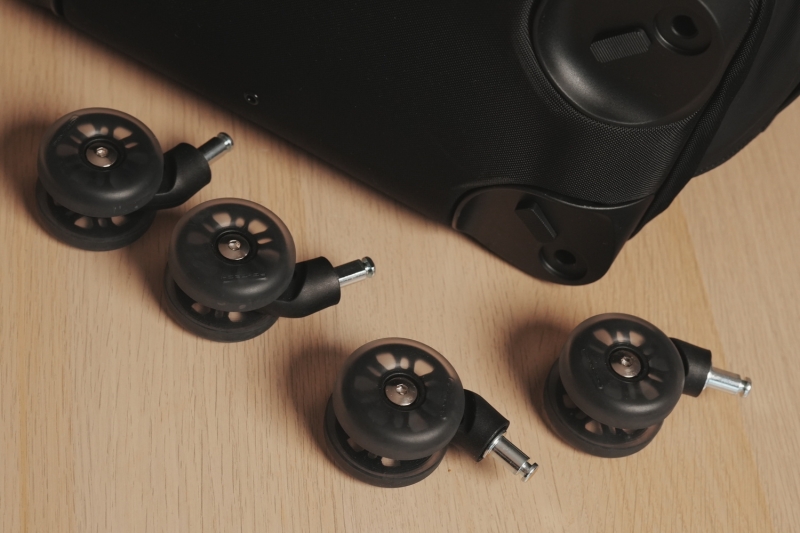
The Pgytech Roller Camera Backpack uses a set of four dual spinner wheels made of hard plastic wrapped in rubber. Each wheel can be removed using a sliding lock placed at the bottom surface of the bag, allowing the user to uninstall each wheel without tools. This makes it easy to switch between a roller bag and a backpack whenever necessary.
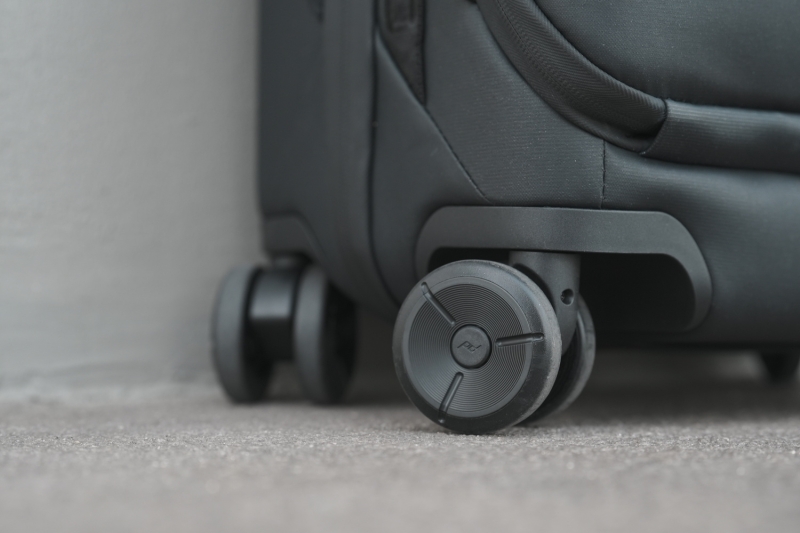
The Peak Design Roller Pro, on the other hand, makes use of 60 mm dual spinner wheels that are made entirely of hard plastic. Since this bag only functions as a roller, removing the wheels would only be necessary when they are damaged and need to be replaced. In such instances, the wheel can be removed with just one screw and easily swapped out with replacement wheels that the brand aims to make widely available.
Modular Features
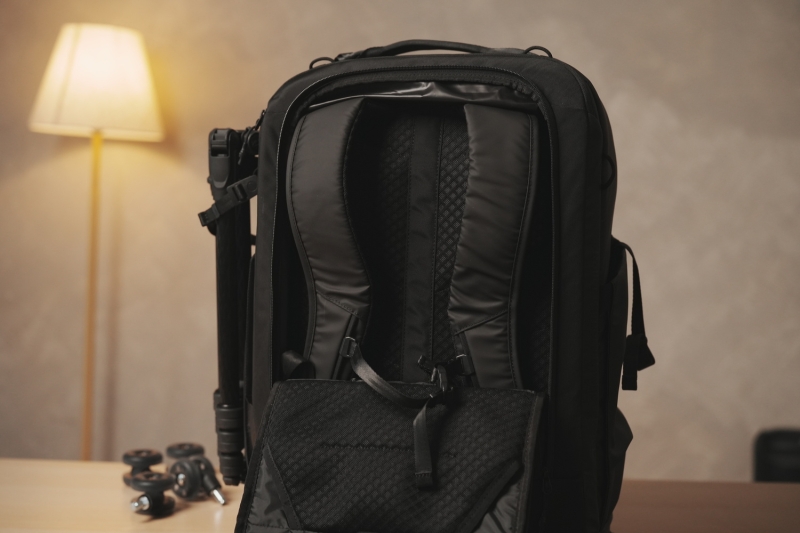
In terms of modularity, the Peak Design Roller Pro switches between a regular travel carry-on and a camera bag using various sizes of camera cubes and packing cubes. Depending on the user’s needs, the bag can be subdivided into spaces with a combination of different cube sizes to maximize the space.
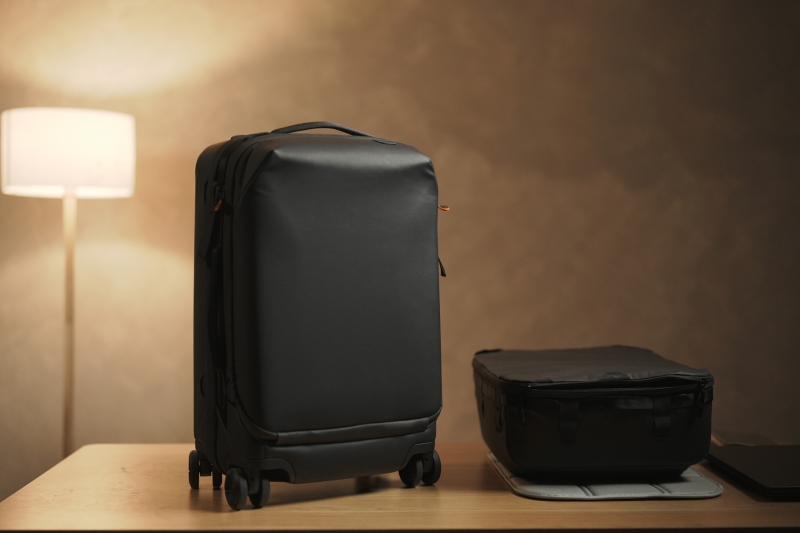
The Pgytech Roller Camera Backpack, however, has the gear padding embedded into its sides, which does not make it ideal for regular travel packing. However, as the name implies, it can easily switch to a backpack whenever necessary, such as when climbing stairs or rough terrain, by quickly removing the wheels and revealing the shoulder straps on the rear panel of the bag.
Application
Though fairly similar in capacity and external form these two bags, in my opinion, shine best in two different use-cases which may be the biggest deciding factor for most people. The Peak Design Roller Pro is a good option for photographers who travel a lot and bring their gear as their carry-on, especially if the amount of gear they carry varies with every trip. This bag fits right within the cabin restrictions of most international airlines and should be less of a worry to bring on board—except when the airline chooses to be strict about the weight of the bag. No matter how light the bag is, the camera gear will inevitably make it heavier than the usual 7-kilogram limit.
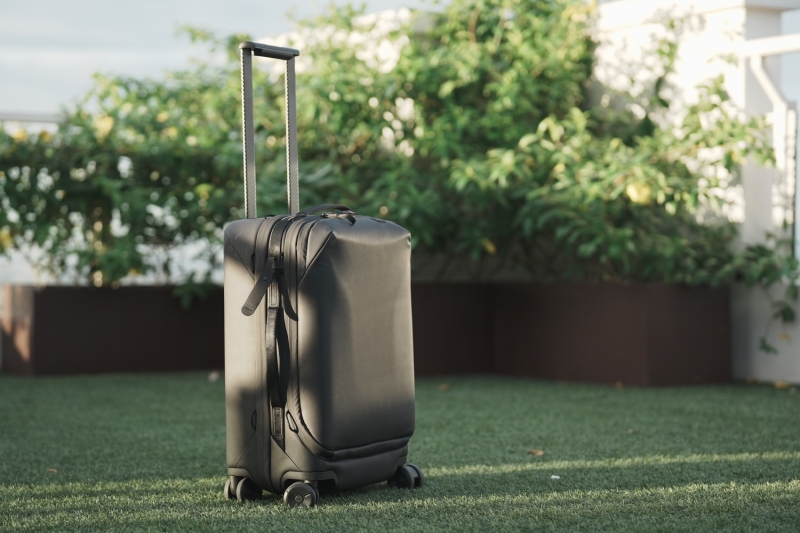
On the other hand, the Pgytech Roller Camera Backpack can be more flexible for photographers who bring a lot of gear to work. While it generally is a 30 L bag, the front expander pocket offers a lot of extra space for accessories, and the side pockets can hold multiple tripods or stands. It might not be ideal as a carry-on, as the size of the bag with the wheels installed is often bigger than the cabin restrictions—especially when the bag is packed at full capacity.
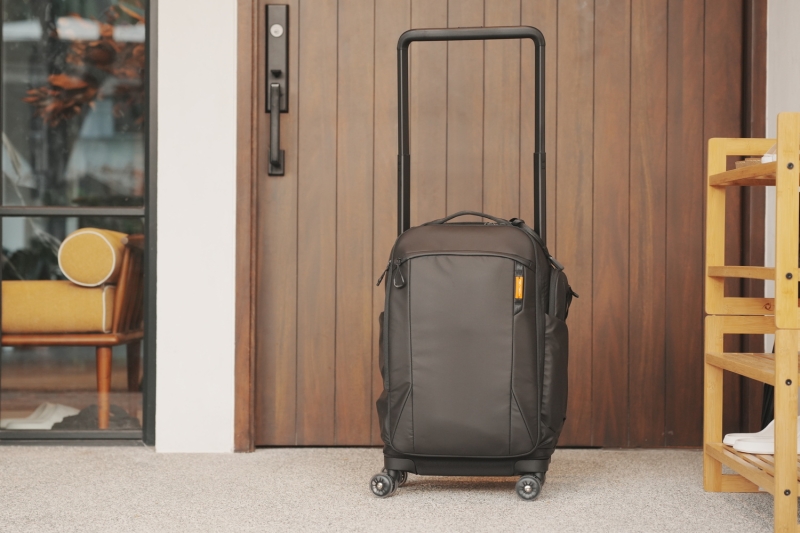
Much like most camera gear, each of these two bags has features that make them more suitable for one purpose over another. Aside from the significant difference in their price tags, they offer very different functionality as well.
Advantages: Peak Design Roller Pro
-
Modular as a camera gear or lifestyle carry-on
-
Slim carbon fiber handle
-
Easily accessible front pocket and laptop compartment
-
Airline cabin friendly
Advantages: Pgytech Roller Camera Backpack
-
Expandable capacity
-
Abundant accessory pockets
-
Easily removable wheels
-
Switches between roller and backpack
You can order the Peak Design Roller Pro and the Pgytech Roller Camera Backpack using the links here.
